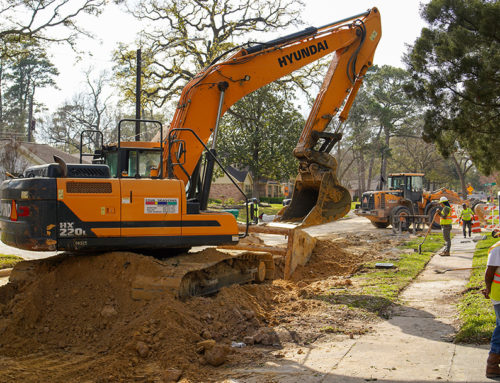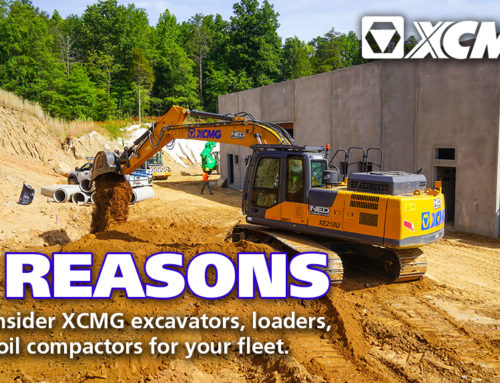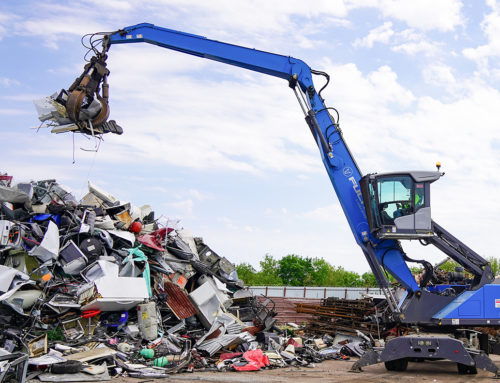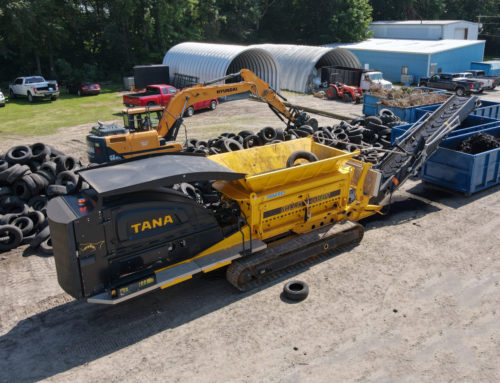Single drum compaction rollers can be found on just about every construction site at one time or another. Before you rent or purchase your next roller, consider the following five things.
1) Size and drum width
Before you rent or buy your next roller, you need to decide what size, drum, and machine operating weight are best for your job. Depending on the soil type and the site location, you might be able to get buy a smaller drum width and weight like the Sakai SV204 roller, which is a 4-5 ton operating weight class machine with a 62″ width drum. This size roller will operate with multiple soil types and is ideal for utility work on smaller job sites with space constraints.
A slightly larger 7 ton class, 67″ drum width roller, like the Sakai SV414 series, is commonly used for roadways, parking lot sub-base jobs, embankments, building foundations, and commercial site developments.
The most common size rollers in the U.S., primarily seen on airport development jobs, highway construction, embankments, reservoirs, and larger commercial site development projects, are larger 84″ width drum rollers. These can vary in operating weights and dynamic compaction force. Sakai’s SV544 series falls into this larger and more popular class of rollers. Depending on the model configuration, the SV544 can range from 11 tons, configured with smooth drum and open ROPS operator’s station, to as heavy as 14.5 tons, when equipped with an optional front dozer, pad foot drum, and enclosed ROPS cabin.
2) Operator comfort
A comfortable operator is usually a more productive operator. One of the things that will certainly impact the price of your roller is the type of operator’s station you select. Most roller models offer two configurations; open ROPS (Roll Over Protection System) or enclosed ROPS cabs with A/C. Throughout much of the southern United States, open ROPS operator’s stations are common, since temperatures are warmer during the winter months. In colder weather climates or extremely hot climates like the southwest, an enclosed cab with climate-controlled A/C may be a better choice, albeit at a higher price point. An enclosed cab machine with A/C usually adds 15% – 20% more to the purchase price. Another factor that affects operator comfort is the machine vibration impact on the operator. Fortunately, Sakai offers a patented drum vibration isolation system and floating deck that is designed to insulate the operator from this vibration and reduce operator fatigue.
3) Smooth drum, shell kit, or dedicated pad foot
One of the most important factors in picking the right roller is determining what type of drum you require for proper compaction performance. Smooth drum models are usually best for rock, gravel, sand, and semi-cohesive soil types. Cohesive silts and clays require more force to knead and compact properly and are best with a pad foot drum roller. On sites with multiple soil types, you might prefer a pad foot kit option, for use only when you need it. Most manufactures offer a shell kit, that can be bolted onto the existing drum, to convert it to a pad foot drum. Sakai is unique from other manufacturers because they offer two options; a pad foot shell kit for smooth drum rollers (designated DF), and a smooth shell kit for pad foot drum models (designated TF).
4) Compaction performance
To obtain optimum compaction performance, you need to first identify the type of soil you are compacting as either cohesive (dense/sticky) or granular (like dirt/sand/rock). Compaction rollers use two vibration modes to ensure proper compaction. These are frequency (the number of times per minute that the eccentric shaft rotates within the drum) and amplitude (the vertical movement of the drum in inches created by the centrifugal force.) On softer soil, like sand, you may need a higher frequency setting with a lower amplitude, while on more cohesive soil like clay, a lesser frequency, and higher amplitude may be necessary to force out air and improve compaction. Sakai rollers are equipped with multiple amplitudes and frequency combinations for any type of soil condition.
5) Warranty
Although rollers are a necessary machine for most job sites, they can sit idle for periods of time while other equipment is clearing, grading, or excavating. Once they are needed for finishing and compaction, they had better run with no problems or thousands of dollars in lost productivity, temporary rental expenses, or costly service expenses may occur to keep the job going. Fortunately, Sakai rollers are one of the most reliable rollers in the industry and they are backed by an industry-best warranty and strong factory-trained dealers, like NED, LLC.
All Sakai rollers are fully covered on parts and labor for 3 years or 3,000 hours whichever occurs first.
NED proudly represents Sakai’s full line of compaction equipment in Texas and in the Carolinas.








